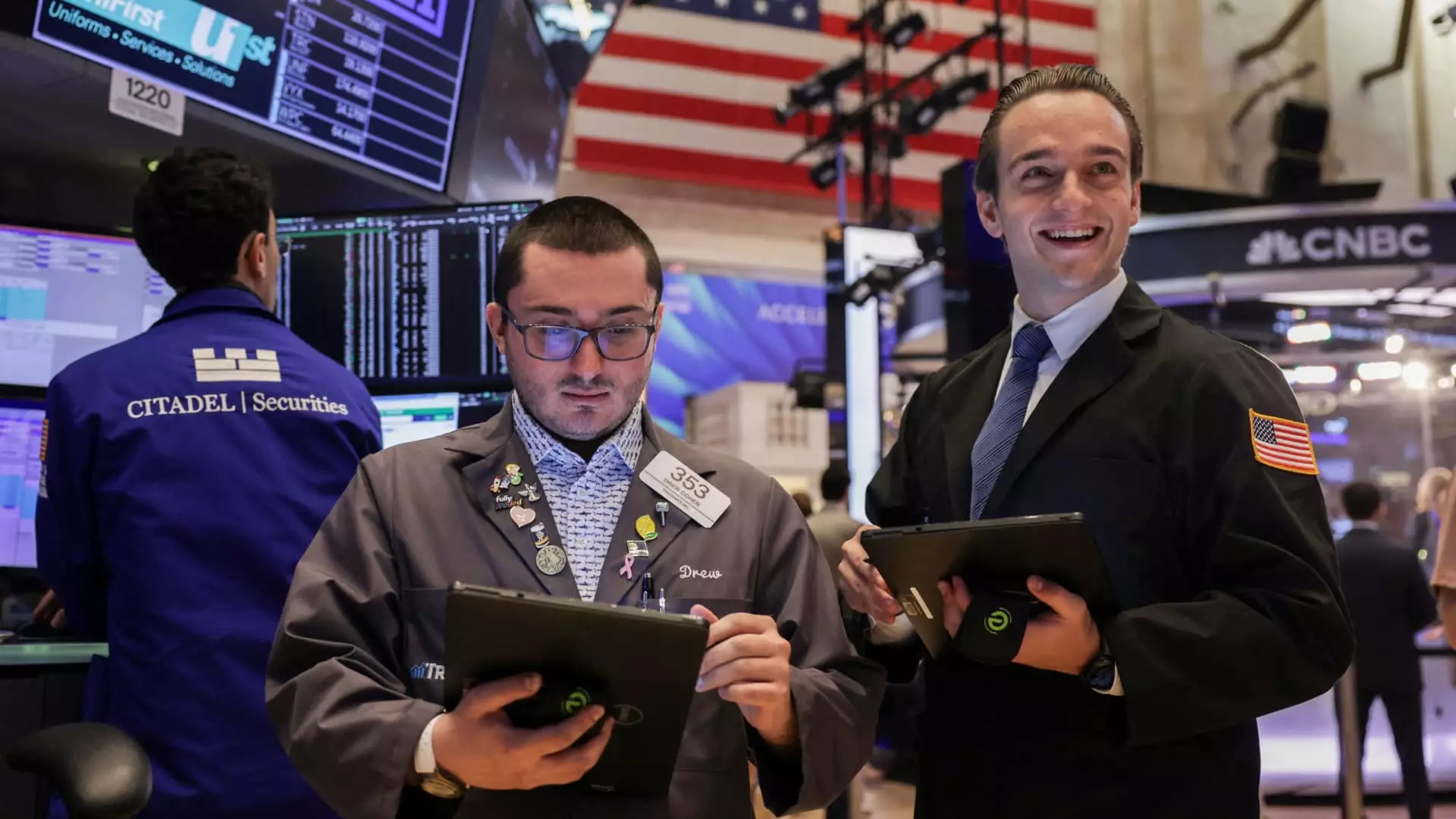The recent surge in the stock market, particularly the S&P 500 hitting new all-time intraday highs, paints a compelling picture of economic resilience. Investors are riding high on expectations of strong corporate earnings and favorable trade developments, seemingly dismissing the underlying fragility of the current economic landscape. While headlines celebrate record closes and incremental gains, a closer analysis reveals a troubling disconnect: this rally is built on shaky ground and a set of assumptions that may not withstand the storm clouds gathering on the horizon.
The narrative of relentless growth is alluring but somewhat myopic. The market’s rise, fueled by better-than-expected earnings from behemoths like Alphabet and Verizon, creates the illusion that the economic fundamentals are robust. However, such outperformance often masks the structural weaknesses lurking beneath the surface. Over 82% of S&P 500 companies reporting so far have beaten expectations, but these positive beats can be as much a result of cost-cutting and financial engineering as genuine growth. The assumption that earnings will sustain their upward trajectory ignores the increasingly volatile geopolitical environment and the persistent threat of inflation.
The Overreliance on Trade and Earnings Data
Trade agreements such as the recent tentative deals with Japan and Indonesia seem to provide temporary relief and boost market confidence. Still, these quick fixes are superficial if underlying systemic issues remain unaddressed. Tariffs, geopolitical tensions, and international conflicts—ranging from Russia-Ukraine to the Middle East—continue to cast long shadows over the stability of global markets. Symbolically, the market’s optimism appears to hinge on the hope that political leaders will continue to broker deals before tariffs and conflicts escalate beyond control.
Furthermore, the market’s response to these trade developments illustrates a dangerous tendency for optimism to overshadow caution. Trading data and policy signals are discounted heavily in the current rally, as if good news from the trade front guarantees long-term stability. What this overlooked aspect is that uncertainty, often driven by geopolitical strife and protectionist policies, can quickly undo these delicate gains. The assumption that trade agreements will continue to be forthcoming without complications is overly simplistic and ignores the complex negotiations and ideological divisions that persist.
The Danger of Complacency and Overconfidence
Perhaps most troubling is the complacency that has taken hold among investors and analysts. The narrative is skewed toward an almost unshakable faith in “strong fundamentals”—a phrase that rings hollow when both inflation and interest rate policies remain in limbo. The Federal Reserve’s expected decision to hold rates steady does little to dispel anxiety about future inflationary pressures or potential economic overheating.
There is an underlying arrogance in believing that the economic cycle can be smoothly extended by external factors or fleeting trade agreements, especially when real vulnerabilities—such as rising consumer debt, shaky labor markets, and geopolitical unrest—are largely ignored. The stock market’s resilience isn’t necessarily an indicator of genuine economic strength but perhaps more a reflection of market participants’ willingness to suspend disbelief in the face of mounting risks.
In this context, the upcoming earnings season and Federal Reserve policy meeting might prove to be pivotal. Yet, many investors continue to cling to the myth that the fundamentals are sufficiently durable to carry the market through turbulent waters. This blind optimism risks leaving the woke investor unprepared for an inevitable correction—one that could come not from a slowdown in earnings, but from a rejection of the overly optimistic narratives dominating Wall Street.
The Hidden Warnings That Cannot Be Ignored
While the headlines trumpet new records and promising trade deals, it’s essential to recognize that these are often temporary reprieves rather than true signals of economic vitality. The risk of a market correction looms, exacerbated by the fact that market confidence is increasingly tethered to fragile expectations rather than concrete realities.
Investors should question whether the current rally is sustainable or simply a mirage crafted by short-term gains and political posturing. The belief that “fundamentals” support a continuing rise glosses over the mounting vulnerabilities of debt, geopolitical disturbances, and inflation. As history has repeatedly demonstrated, markets that are driven primarily by confidence rather than fundamentals are perilously close to correction when events unfold that challenge prevailing assumptions.
Rather than embracing euphoric optimism, a more cautious approach would demand acknowledgment of these risks and a reassessment of what truly underpins the market’s recent gains. Because in the long run, the market’s strength should be measured by its resilience to adversity—not by temporary highs prompted by fleeting news and policy statements.



Leave a Reply